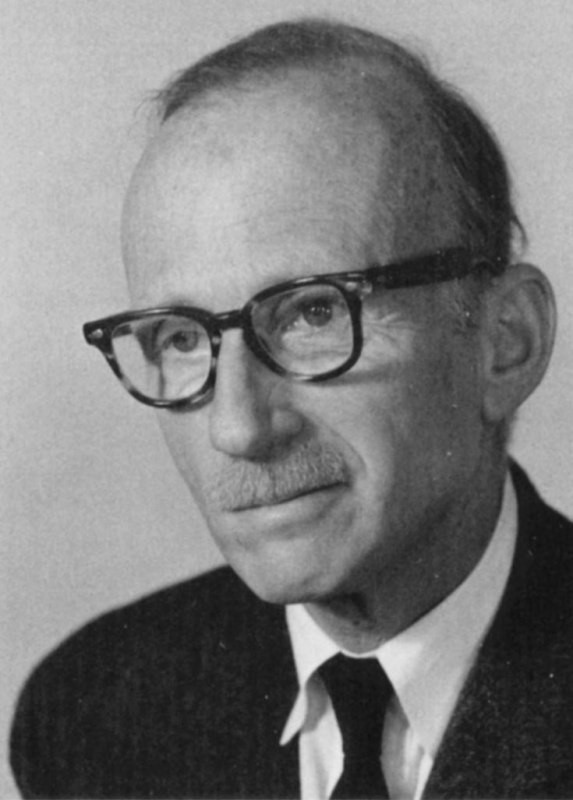Gerhart Ladner, Univ.-Prof. Dr. phil.
Honors
| Ehrung | Titel | Datierung | Fakultät | |
|---|---|---|---|---|
| Monument for Art Historians | 2008/09 | Faculty of Historical and Cultural Studies |
|
|
| Monument for Historians | 2022 | Faculty of Historical and Cultural Studies |
|
- Medieval Studies
- Art History
- Faculty of Philosophy
Ladner, the son of an industrialist, attended secondary school in Vienna’s 19th district, graduated in 1924 and then studied medieval history, art history and archeology at the University of Vienna. In 1930 he obtained his doctorate. From 1927 to 1929 he was a member of the Institut für Österreichische Geschichtsforschung (Institute for Austrian History Research) and until 1931 an assistant at the “Monumenta Germaniae Historica” in Berlin and Munich. In 1932 he worked on numismatic topics for the Österreichischer Ausschuss für historische Ikonographie (Austrian Committee on Historical Iconography) and from 1931 until 1933 also acted as the secretary of the Österreichische Gesellschaft für die Geschichte der Ikonographie (Austrian Society for the History of Iconography) as well as of the Interne Kommission für Geschichtswissenschaft (Internal Commission for Historical Science). From 1933 to 1938 he held a scholarship at the Österreichisches Historisches Institut (Austrian Historical Institute) in Rome, where - with the permission of the pope - he worked on a two-volume medieval papal iconography.
Only a few weeks before the “Anschluss”, in January 1938, Ladner habilitated as a private lecturer for medieval history and historical ancillary disciplines at the University of Vienna, which was to later help him receive scientific work overseas. Although he had converted from Judaism to Catholicism in 1933, he was classified as a “Jew” according to the “Nuremberg Laws”. For this reason, the ministry of education revoked his teaching license after the “Anschluss”, on April 22nd, 1938. Ladner emigrated to London in 1938 and moved on to Canada in October of that same year. Here he worked as a lecturer for Early Christian and medieval art history as well as medieval history at the Pontifical Institute of Medieval Studies in Toronto. In 1940 he became an assistant professor of medieval history and archaeology at the University of Toronto and served in the Intelligence Service of the Canadian army from 1943 until the end of the war.
After the war he did not return to the University of Vienna or Austria in general, even though the department had put him in third place on the list of nominees for a vacant chair previously occupied by Hans Sedlmayer. He declined a call to the University of Innsbruck because of “personal, domestic reasons”. An invitation to teach as visiting professor at the philosophical faculty of the University of Vienna in October 1946 ultimately also did not work out. In that same year he moved to the USA, where he taught as assistant professor and then associate professor at the University of Notre Dame, Indiana. In 1951 he became professor for art history at Howard University in Washington, D.C., and then switched to a position as associate professor at Fordham University in New York the year after that. Here Ladner taught until 1962 and advanced to being a full professor of history. Apart from this he also took up a position at Columbia University in 1953. From 1963 until he received emeritus status in 1974, he taught at the University of California in Los Angeles. Lastly he also worked as a distinguished visiting professor at the University of California, Berkeley, and as visiting professor at the Center for Byzantine Studies in Dumbarton Oaks, Washington, D.C.
Some of his most famous works are “Theologie vor dem Investiturstreit. Abendmahlstreit, Kirchenreform, Cluny und Heinrich III.” (1936), “The idea of reform. Its impact on Christian thought and action in the age of the fathers” (1959) and “Die Papstbildnisse des Altertums und des Mittelalters” (1941, 1970, 1984).
Among other things, he was a member of the Medieval Academy of America, corresponding member of the Austrian Academy of Sciences, and member of the American Catholic Historical Association, the American Renaissance Society as well as the Dante Society. From 1949 until 1951 and from 1960 until 1961 he furthermore belonged to the Institute for Advanced Study in Princeton.
Ladner was bearer of the Haskins Medal of the Medieval Academy of America (1961).
Archiv der Universität Wien, Philosophische Fakultät, Personalakt 2401 und GZ 659-1937/38. | Österreichisches Staatsarchiv/Allgemeines Verwaltungsarchiv, Bestand Unterricht, Personalakt Ladner.
Zuletzt aktualisiert am 02/12/24

